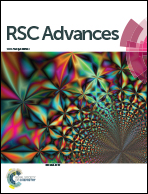Highly manufacturable graphene oxide biosensor for sensitive Interleukin-6 detection
Abstract
Graphene Oxide (GO) is analogous to graphene with oxygen moieties. It offers several advantages over graphene, such as a tunable band-gap, facile synthesis and no use of metal catalysts. Due to the monolayer configuration of GO, all of its carbon atoms are readily exposed to the atmosphere and are sensitive to surface perturbations, thus making GO very suitable for liquid-gated field effect transistor (FET) type sensing applications. However, there are two main limitations preventing GO usage in practical FET sensors. It displays (1) variable coverage between fabricated chips and (2) high electrical resistance. In this paper, we overcome these two limitations by using a facile atmospheric-pressure ethanol Chemical Vapor Deposition treatment on top of pre-coated GO (ECVDGO) which decreases the electrical resistivity from 1.99 × 106 Ω square−1 to 4.68 × 103 Ω square−1, and resistivity variation from 1.60 × 106 to 7.72 × 102 Ω square−1; whilst enlarging the surface GO coverage up to 100%. We then demonstrate the ability of the post-treated ECVDGO liquid-gated FET transducer to detect Interleukin-6 which is a multi-functional cytokine involved in regulating the immune function and the acute phase response. The sensing window of the fabricated biosensor to Interleukin-6 is within the physiologically-relevant range, from 4.7 to 300 pg ml−1. The LOD of the sensor based on 3σ is 2.9 pA or 1.53 pg ml−1. This study demonstrates the emerging potential of GO with high manufacturability in liquid-gated FET biosensors for sensitive and label-free detection of bio-molecules.


 Please wait while we load your content...
Please wait while we load your content...